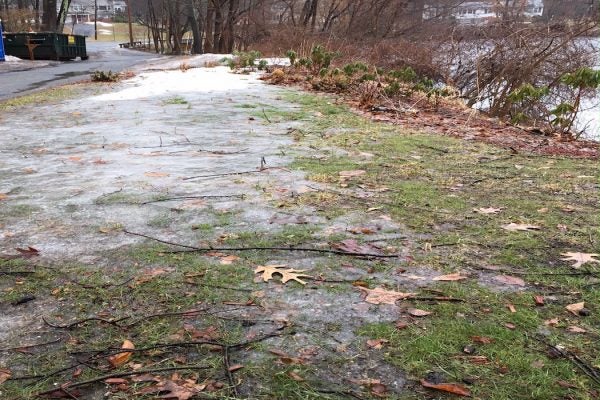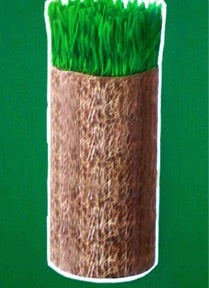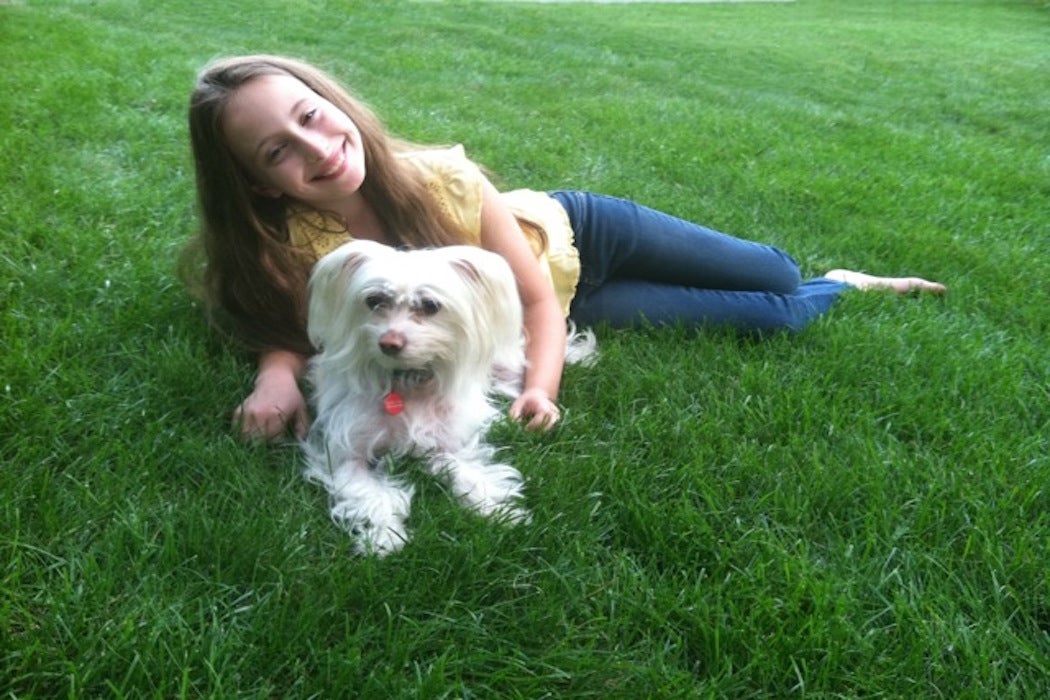It all started with a dead cat. The cat died from cancer—a huge tumor that developed inconspicuously for no apparent reason at all. “I wanted to know what caused it,” says Jackson Madnick, a 67-year old Massachusetts resident who since then turned into a celebrity citizen scientist. “In 1999, I used to live in a house next to a golf course and the cat went outdoors a lot, running around on the grass,” he recalls. Could that have been a factor?
Madnick attended a workshop run by a local health department and learned that chemical fertilizers that are used to keep lawns and golf courses plush and green may have indeed played a role. A vet told him that before the 1950s, when lawn fertilizers became commonplace, animal cancer was nearly unheard of—but by the early 2000s, that number surged to over 40 percent. In another class, Madnick learned that fertilizer runoff also kills aquatic life. The chemicals don’t stay in the grounds where they were originally applied. The rains wash them off to rivers and ponds where they fuel toxic algae blooms that suck oxygen out of the water, smothering many other life forms.
As Madnick plowed through research, he concluded that a typical American lawn might be the most toxic place in one’s household. To stay perfectly manicured and flawlessly green, the lawns must be blanketed with chemicals that contribute to the asthma epidemic, cause tumors in pets, and kill off fish in lakes and rivers. Lawns also collectively consume billions of gallons of water. According to the EPA, the average household uses up about 320 gallons daily, and about a third of it goes toward landscape irrigation—and even more in dry Southwest climates. Cumulatively, that irrigation water adds up to nine billion gallons a day.
Want more stories like this one?
The lawn is the quintessential American landscape, covering 25 to 40 million acres of land, says Ted Steinberg, a professor of history and law at Case Western Reserve University, who wrote a book, American Green: The Obsessive Quest for the Perfect Lawn. He points out that there are indeed many advantages to having green grass sprawling at your doorsteps. Grass prevents soil erosion. It absorbs excess water and staves off floods. It can even help preserve the quality of surrounding water basins by preventing water runoffs—given that it’s not carpeted with chemicals. “There’s nothing wrong with grass,” Steinberg says—but the quest for the ultimate flawless green groundcover is unsustainable. “The problem is the perfect lawn.”
Madnick saw that problem too. So he resolved to redesign the quintessential American lawn.

The American Green Dream
The lavish green meadows that surround many American houses are a fairly recent phenomenon that sprouted in the early twentieth century and blossomed after World War II, Steinberg says.“The idea that land outside your house should look like a living room carpet is actually a very modern notion,” he explains. The concept took hold in the 1920s, when a company named Scott that sold grass seeds started publishing a “Lawn Care” newsletter, promoting the upscale outdoor look. In the 1920s only a few people could afford such luxury, but the post World War II technology boom made the green riches affordable to the masses. An article in a 1963 issue of Consumer Bulletin titled “How to Grow a Better Lawn,” assured readers that “one does not have to be an expert or spend large sums of money to have a good lawn. Soon the entire country was fervently sowing, mowing, and watering their green dream.
There was only one problem. The grasses that the homeowners were trying to grow wouldn’t take in all the weather or soil conditions they were planted in. Some grasses were brought from England or Scotland where rain was abundant, winters were mild, and summers weren’t arid. But even some of the native American grasses that did well in one part of the country, wouldn’t grow in the other. Some died from winter cold, others from summer droughts.
Varieties like Kentucky bluegrass, initially evolved in cool moist climates. They would flourish in Newfoundland, but wither in California or the dry American West. “It requires a lot of water, and the more water you add, the more nutrients leech from the soil,” Steinberg says. “So the more nutrients you have to return—and buy more chemical fertilizer.”
Fertilizing became an integral part of turf management. Grasses, as well as all other plants, need nitrogen to grow. But soil nitrogen is a fairly limited resource. It is created by particular bacteria and is quickly consumed by the plants. “Plants have a symbiotic relationship with this bacteria,” explains Mark Benvenuto, professor of chemistry at the University of Detroit Mercy. “Bacteria get carbohydrates from plants and plants get ammonia from bacteria.”
Historically, to enrich soils and replenish nitrogen and other compounds, farmers used various organic sources, including manure, agricultural leftovers, or ground animal bones. Throughout history these sources were limited, so farmers generally reserved them for fertilizing crops, not grass. But the industrial revolution equipped humankind with an unprecedented way to make fertilizer. In the early twentieth century, German engineers Fritz Haber and Carl Bosch developed a way to pull nitrogen from the atmosphere, where this gas is abundant, and fuse it together with hydrogen into ammonia, or NH3—a potent fertilizer used all over the world today.
The Haber-Bosch process, first commercialized in 1913 and still used today, is very resource intensive, and has a huge environmental footprint, Benvenuto explains. It requires a temperature of 500 to 600 centigrade to create it, a pressure of about 1500 atmospheres, and a special catalyst to keep the reaction going. As a result, it is very polluting. It uses large amounts of fossil fuels; it emits greenhouse gases; and it also releases nitric oxide and nitrogen dioxide, commonly named the NOX gases, which are atmospheric pollutants and cause acid rains.
Without this process, half of the world’s population would likely starve today, Benvenuto says. But using it to grow grass is another story. In Madnick’s view, fertilizing grass that simply wasn’t meant to prosper where people wanted it to grow didn’t make much sense. Instead of constantly optimizing the conditions the grass grew in, why not optimize the grass itself?

It’s All in the Grassroots!
As a start, Madnick gathered hundreds of different seeds and began growing them individually, in little containers in his backyard, without water and fertilizer. Grasses didn’t like it and soon began to die en mass. “By the fall of 2001, most of them were dead, they all croaked,” Madnick recalls. “With the exception of the three variations of the cactus family that were so prickly that you wouldn’t want to walk on them with your bare feet.”
Madnick gathered more seeds. His house turned into a science lab. Hundreds of little pots covered long tables set up in his patio. He spent his days taking the vitals of the sprouting green shoots, comparing his watering records, planting different varieties together and logging the results. At some point, he stopped inviting friends over because part of the house was looking like a research facility. His significant other, Betsy West, was a sounding board, but she would occasionally get frustrated with his obsession, he recalls. “What are these thousands of pots for? I don’t know what to tell our friends and acquaintances,” he remembers her asking. So he tried to keep his experiments in relative obscurity. “I didn’t want people to think I was a mad scientist,” he chuckles. “I didn’t want to seem like a crackpot.”

Despite his efforts, the grasses kept dying. On several occasions Madnick almost gave up, thinking that he was wasting his time by aiming for the impossible.
And then one day, one batch of grasses didn’t die.
The batch was a combination of seven different seeds. It grew slower than other sets and had sprouted deeper roots than usual. And it somehow survived the stringent regimen Madnick subjected it to.
“I almost couldn’t believe it, so I grew a couple more pots from my log book,” Madnick says. “And I got the same deeper roots and slower growth!”
It was all in the roots, he realized. Typical lawn grasses have shallow roots that grow three to four inches deep. But the combination of the seven seeds in specific proportions formed a symbiotic relationship and sprawled 12 to14-inch roots. That allowed the grass to reach ground water and also slowed its growth, which resulted in significantly less mowing. In fact, when not cut at all, the grass would eventually flip over and turn the lawn into a meadow. Madnick named his grass Pearl Premium (after his mother Pearl, who was an environmentalist), formed a company, and began selling it.
The grass took. Massachusetts’s landscapers began to offer it to customers. California residents switched to Pearl Premium during their record-long drought. The grass won a thumbs-up from a Utah truck driver who no longer had to worry about lawn maintenance while on the road. And after the frigid Northeast winter of 2018 wiped out many lawns, Pearl Premium emerged from under snow and ice still emerald-green.
Meanwhile, Madnick keeps experimenting. Using various mixes and different seed ratios, he expanded his repertoire with specialized mixes for sun, shade, and different climates.
“It took me eight years to get to get my first bag of seeds,” he says—but now experimenting is easier. Whether the next mix is for colder winters or arid summers, he knows the answer will be in the grassroots. And with 58 million home lawns that are estimated to exist the United States, many of them still could use a better grass.







